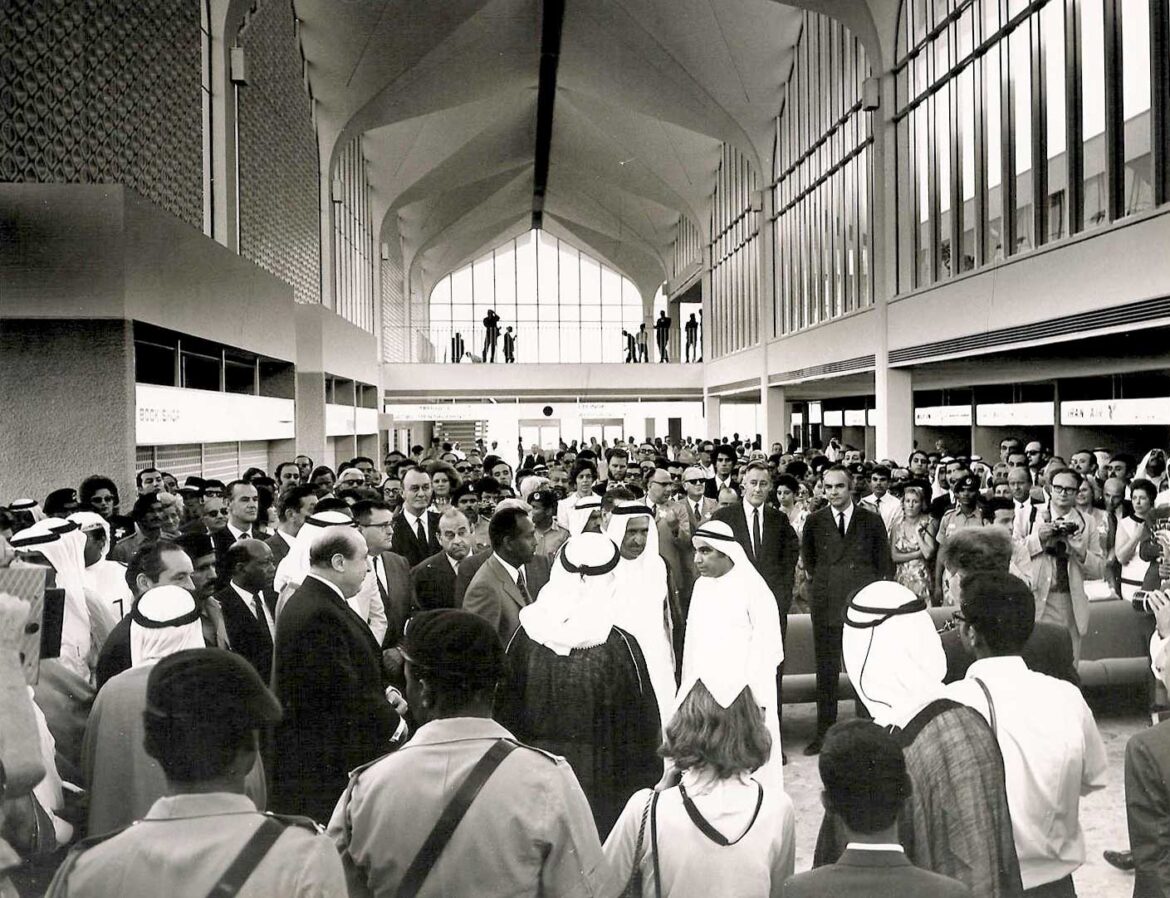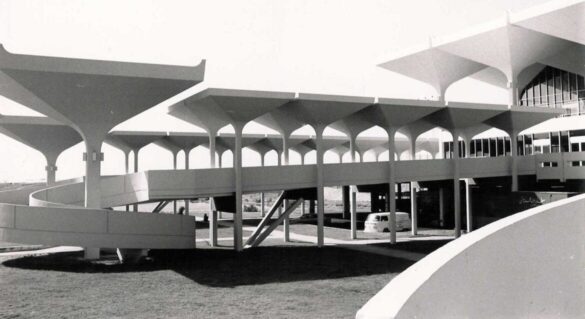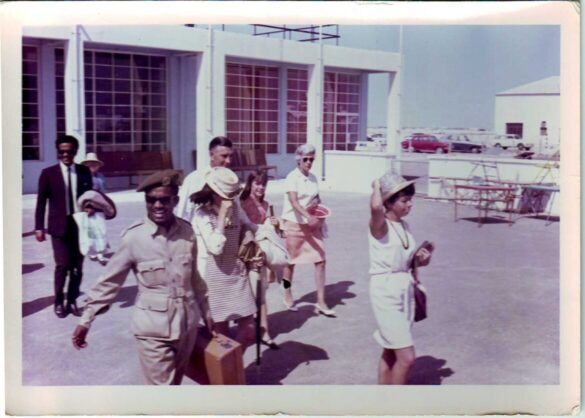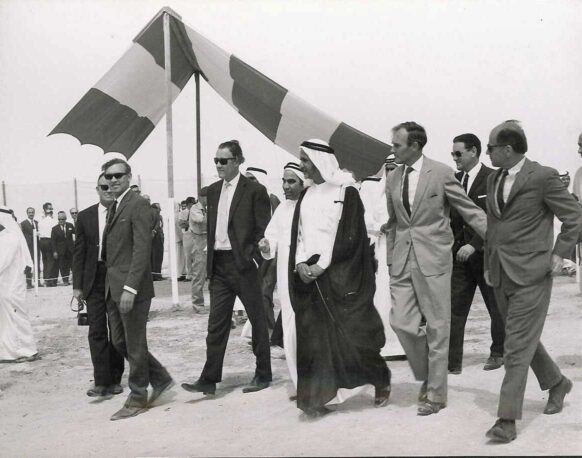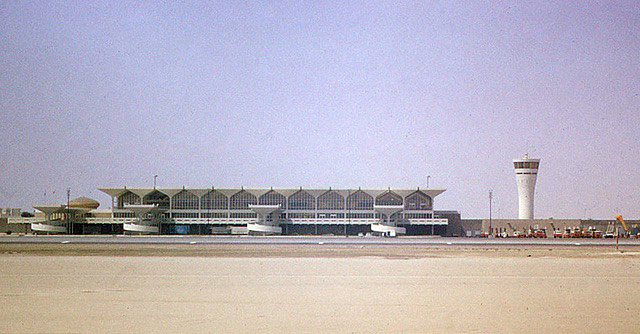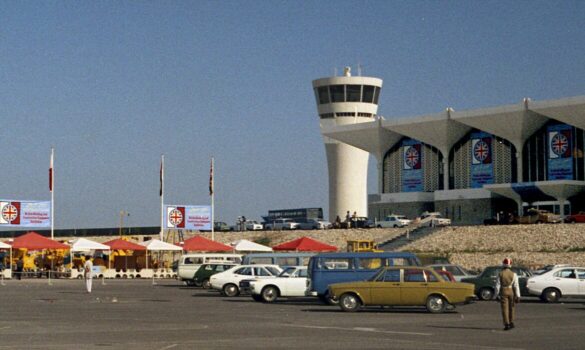November 8, 2021
Organizers in the United Arab Emirates are concluding the year with a calendar of celebrations, despite everything going on in the world. Expo 2020, cowed by the pandemic last year, successfully opened in late September as perhaps the world’s first global event since lockdowns. More festivities will commence on December 2, when the United Arab Emirates turns fifty.1
Another fifty-year anniversary this year received little notice—the opening of Dubai’s first major airport terminal, currently known as Terminal 1. Designed by Page & Broughton in 1968–69, it was one of the city’s most expressive manifestations of modern architecture. It still would be, were its original form and function not drastically altered. Upon entering the departures concourse today, you might discover that a shadow of the original design still endures—in remnants of the cream-colored columns that start slender at the base, then flit upward and stretch outward to attach with neighboring columns, resulting in a field of ogee arches.
